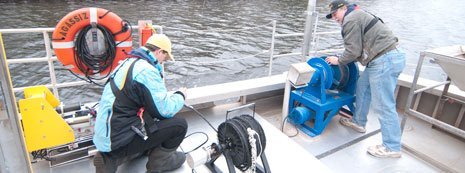Hydrologic impacts and trade-offs associated with forest-based bioenergy development practices in a snow-dominated watershed, Wisconsin, USA
Document Type
Article
Publication Date
4-20-2019
Abstract
Growing demand for biomass-derived fuels has resulted in an increase in bioenergy projects in recent years, a trend that is expected to continue. However, broad expansion of bioenergy feedstock production may have significant environmental consequences. Accordingly, the goal of this study is to investigate how forest-based bioenergy development may affect hydrological systems at the watershed scale. Specifically, this study addresses hybrid poplar cultivation for biofuel production in a snow-dominated watershed in northern Wisconsin, USA. The Soil and Water Assessment Tool (SWAT), calibrated and validated for streamflow and biomass production cycles, is used to evaluate the effects of land use change the corresponding to a range of biofuel development scenarios. The biofuel scenarios follow physically-based rules for land use conversion to polar plantations from hay, pasture, and forested lands; along with a suite of alternative management practices, including rotation time, planting density, fertilizer application and irrigation. Trade-offs between biomass production, fertilizer use, and hydrologic alteration are evaluated for the feedstock production system. The highest density (1,111 trees/100m2) and shortest rotation (5-year) treatments produce the highest biomass and are the most efficient treatments in terms of water and fertilizer use per ton of biomass. The high efficiency is due to optimal values relationships between leaf area index, biomass production, and N uptake. At annual or greater time scales, the simulated conversion to poplar had minimal effect on ET and streamflows. However, in summer months, the ET from the poplar substantially exceeds that of the original land use, so that streamflows decrease by as much as 50%. Irrigation to meet soil water deficits increased biomass production, but only by 4% on average, which is not surprising for a temperate, humid watershed.
Publication Title
Journal of Hydrology
Recommended Citation
Heidari, A.,
Mayer, A. S.,
&
Watkins, D.
(2019).
Hydrologic impacts and trade-offs associated with forest-based bioenergy development practices in a snow-dominated watershed, Wisconsin, USA.
Journal of Hydrology.
http://doi.org/10.1016/j.jhydrol.2019.04.067
Retrieved from: https://digitalcommons.mtu.edu/cee-fp/97


Publisher's Statement
© 2019 Elsevier B.V. All rights reserved. Publisher's version of record: https://doi.org/10.1016/j.jhydrol.2019.04.067